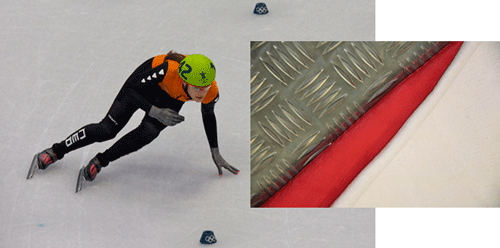For the next four weeks, the world of sports will be having a big party — it’s World Cup time in
South Africa. Sports is an important sector of the global textile industry. Sports and leisurewear
are generating important revenues for textile companies all over the world. Top brands like Nike,
Puma and Adidas spend millions of dollars for their marketing to maintain their place in the top
league as suppliers of sportswear.
EMPA St. Gallen
EMPA, the Swiss Federal Laboratories for Materials Science and Technology, is a highly
reputed institute for various sectors of the industry. It is an interdisciplinary research and
services institution for material sciences and technology development within the ETH Zürich, the
Swiss Federal Institute of Technology.
EMPA has a special interest in textiles at its offices in St. Gallen, the world capital of
embroidery. The inauguration dress worn by U.S. First Lady Michelle Obama included embroidery from
St. Gallen. No wonder, in times of the World Cup, the two topics at a recent EMPA Science Apéro
gathering were the physical strain soccer players’ bodies endure during the game and new functional
clothing developments.
Dr. Bruno Damann, team doctor of the local soccer club, stated that in recent years, the game
has become considerably harder and faster. The huge sums of money that are spent bring on
ever-increasing competitive pressure. “The competition comes not that much from the opposing team
as from a player’s own colleagues,” he said.
Injuries
EMPA notes that in order to win and hold a place on the first team, a player must undergo
very aggressive training, and he is most likely to sustain injury during this training period. The
Swiss Accident Insurance Fund reports there are 191,000 soccer-related accidents annually in
Switzerland, a country of some 7 million citizens. In some instances, new types of injuries result
owing to technological advances. As an example, while soccer shoes today provide excellent
stability and improved grip, the design also increases the load on the knee and the likelihood that
players will sustain more knee-related injuries.
High-performance Textiles
EMPA further states that sports equipment suppliers are challenged in their efforts to help a
player go “faster, longer, further.” Increasingly sophisticated garment systems, such as
tight-fitting compression apparel, contribute to enhanced performance. Such garments were first
developed for swimmers, but now they are designed for a large range of sports, including soccer.
Compression garments apply pressure on particular parts of the body, thereby increasing the blood
flow by about 2 percent and reducing muscle vibration. On the other hand, the materials from which
these garments are made are not very breathable, which can make them uncomfortable.
Body Temperature
Improving apparel materials is also the goal of an EMPA project conducted by researcher
Markus Weder, whose main focus is sports apparel that enables optimal body temperature control,
from prevention of overheating during a game to prevention of chilling during periods of lower
activity.
Athleticwear must meet rather demanding requirements. Weder mentioned the fabric must offer
optimal thermal insulation properties for a wide range of temperatures, which in South Africa may
be freezing or sweltering in June and July, depending on the location. It is not sufficient just to
select a long or short-sleeved functional jersey.
Army Material For Athleticwear
To demonstrate textile technology advances, EMPA cites a comparative test among three
different jerseys: an older Swiss army shirt, a shirt currently worn by the St. Gallen soccer club
and a T-shirt EMPA recently developed for the Swiss army. The new material keeps the body cool and
consequently minimizes perspiration, while it also is by far the fastest-drying of the three
materials.
More information is available at
www.empa.ch.





